The Essential Jazz Listening of Terry Gibbs

“On a personal note, I have for many years now been frustrated and dismayed by the National Endowment for the Arts’ inexplicable failure to name Terry Gibbs as an NEA Jazz Master. Since the creation of this honor, I can think of no other jazz musician more deserving of the award, and it is a travesty, in my opinion, that he has not yet received it. Terry Gibbs was born on October 13, 1924 and, though he shows no signs of slowing, the NEA should move while we still have this inimitable musician in our midst: we’d like to celebrate his award with him . . . in person!”—Dean Pratt
Vinyl Tap
By Dean Pratt
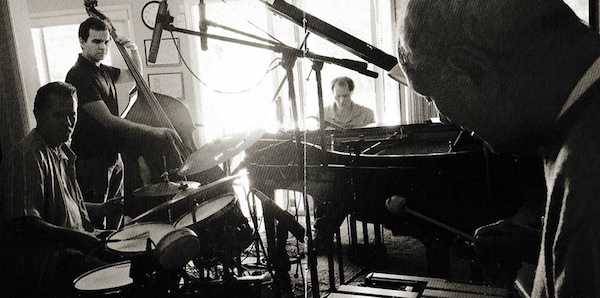
“How can you quit when you’re really having fun playing? It’s like a fighter—you have to practice in-between all the time to be able to do what you’re capable of doing. When I’m 90 years old, I’ll probably say the same thing. I’ll probably be out on the road. I keep threatening to retire some day, but so long as they call me, I can’t quit. As long as I can still think of something to play on ‘I Got Rhythm’ and the blues, how can I quit?”—Terry Gibbs (as told to Dan Moore)
Author’s Note: My friend Audrey Mannes Mosello put this (vinyl) disc in motion when she asked me to post my favorite albums—my “essential jazz listening list”—on Facebook over a specified period of time. Or something like that. Audrey, you know what you asked of me, but I doubt you expected the deluge that would follow on as a result.

PENDLETON South Carolina—(Weekly Hubris)—March 2021—Brooklyn-born Julius Gubenko, known to all lovers of good music as Terry Gibbs, is one of the last living legends of the Be-Bop Era. Lionel Hampton, Red Norvo, Milt Jackson, and Gibbs were the four musicians responsible for solidifying the acceptance of the vibraphone, or “vibes,” into the pantheon of jazz instruments.
Hampton and Norvo reigned supreme during the Swing Era of the 30’s and 40’s but, with the arrival of Charlie Parker and Dizzy Gillespie, it was Jackson and Gibbs who established themselves as the leading proponents of the vibraphone’s place in the new jazz genre of Bebop.
Terry grew up in a musical family and, a true prodigy, at the age of two began his musical career on a child’s set of drums. At seven, he was already picking out tunes on his brother’s xylophone and, at twelve, he became a winning contestant on the then-prestigious Major Bowes Amateur Hour with his lightning-fast, 45-second rendition of “The Flight Of The Bumble Bee.”
During World War Two, Gibbs, 18, signed up for military service. Writes interviewer Dan Moore: “He was trained as a tank driver but never got overseas. Gibbs recalls: ‘We did our three months of training, I got my shots, I’m ready to go overseas, and all of a sudden I get sent to Dallas, Texas.’ Dallas was the home of the 8th Service Command whose job it was to make Army movies and produce radio programs for bond drives. They needed a percussionist. Gibbs ended up fulfilling his commitment to Uncle Sam as a stateside musician, playing drums and writing arrangements.”
After his three-year hitch in the army, Terry headed for New York City and 52nd Street . . . and the rest is history. After stints with the small groups of Bill De Arango and Chubby Jackson, Benny Goodman, and the big bands of Tommy Dorsey, Buddy Rich, and Woody Herman, Gibbs became one of the premier exponents of Bebop, winning both the “Downbeat” and “Metronome” magazine polls from 1950-1955.
Whether leading his own small groups, fronting the Dream Band, or acting as musical director for the TV shows of Regis Philbin and Steve Allen, Terry is the consummate professional: he can do it all.
Though I believe any Terry Gibbs recording is worth your attention, I’ll list some of my favorites here.
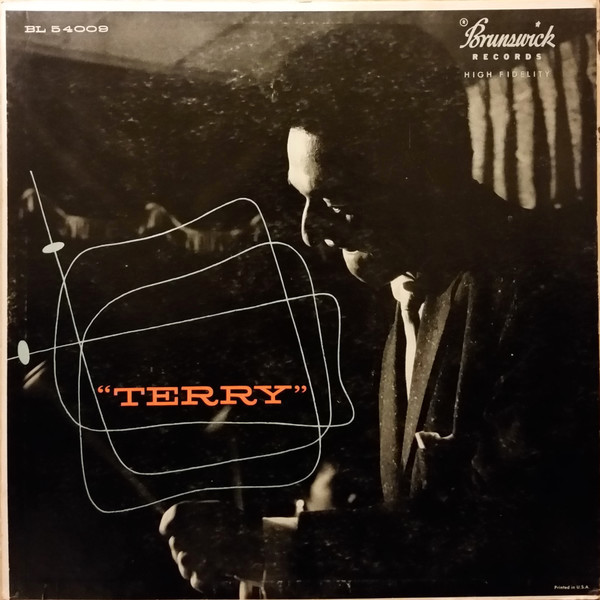
Terry, (released in 1956 on the Brunswick label BL 54009) features Gibbs in primarily two settings: as the leader of his Quartet, featuring Terry Pollard (piano), Kenny O’Brien (bass), Chick Keeny (drums); and with a studio orchestra including Al Porcino (trumpet), Johnny Mandel (bass trumpet), Don Elliott (mellophone), Al Epstein (baritone sax), Turk Van Lake (guitar), Claude Noel (piano), Kenny O’Brien (bass), and Sid Bulkin (drums). This was Gibbs’s first 12” LP release and contains the Gibbs originals, “Temporary,” “Tremendez,” “Old Man Newman,” “What Ho,” “Fatty,” “Baby Doll,” and “Jazzbo Mambo” by the Quartet; and “Where Are You?,” and “That Feeling and Love Is Just Around The Corner” with the orchestra. The remaining track is Zoot Sims’ composition “Trotting” by a sextet comprising Don Elliott (mellophone), Al Epstein, and Ray Abrams (tenor saxophones).
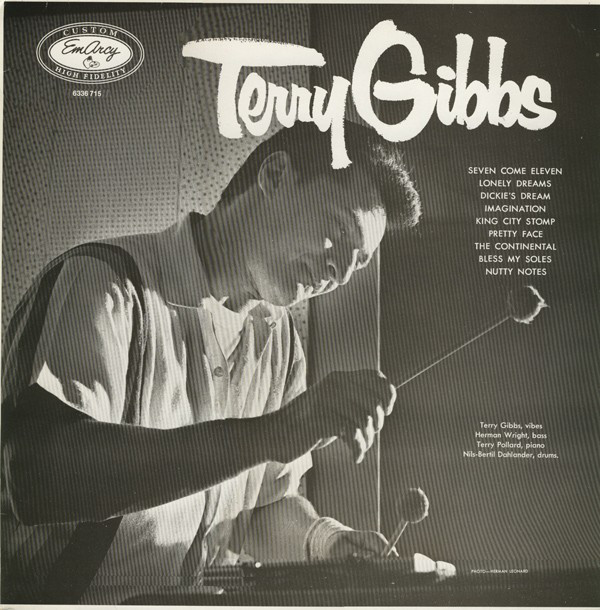
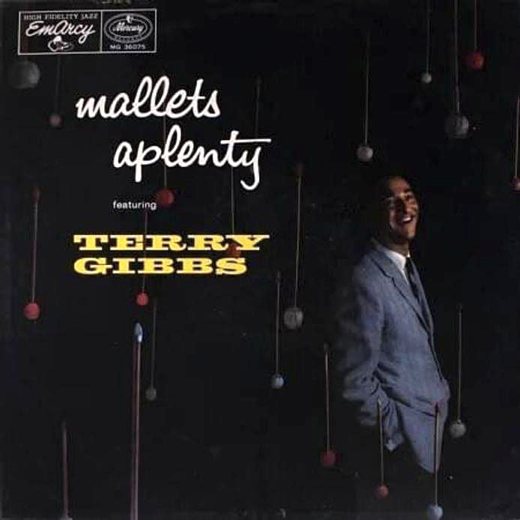
Next up, recorded in 1955 and 1956 on the EmArcy label, are Gibbs’s first two quartet recordings as a leader, Terry Gibbs and Mallets Aplenty. Both albums feature the amazing, aforementioned Terry Pollard on piano. Discovered by Gibbs in Detroit, Ms. Pollard was equally adept on the vibes as well as on the 88’s. Her vibe duets with Gibbs garnished raves from audiences wherever they appeared. Rounding out the group are Herman Wright (bass), and Nils-Bertil Dahlander (Terry Gibbs) and Jerry Segal (Mallets Aplenty) (drums). Both discs are full of Gibbs’s originals, “Lonely Dreams,” “King City Stomp,” “Pretty Face,” “Bless My Soles,” “Nutty Notes,” “Nothin’ To It,” “Haunted,” “Er-Bee-l,” “Gibberish,” “Soupy’s On,” and “Then It Happens,” along with the jazz classics, “Dickie’s Dream,” “Seven Come Eleven,” and standards, “Imagination,” “The Continental,” “Mean To Me,” and “I’ll Remember April.”
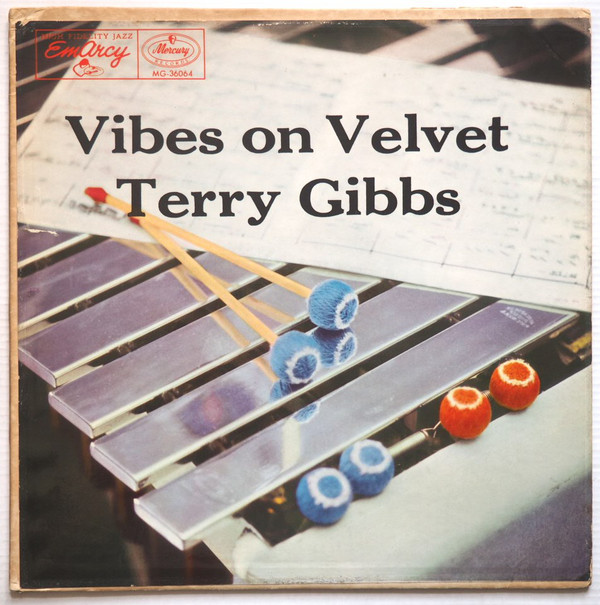
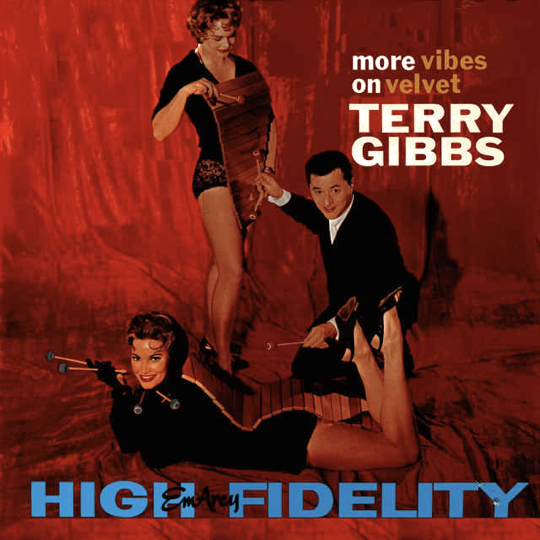
Also recorded in 1955 is Vibes on Velvet, the first of two concept recordings featuring Terry accompanied by a saxophone section added on to the Quartet; More Vibes on Velvet being the second, recorded in 1958. This initial album was magnificently arranged by Manny Albam, one of the past masters of composition and arranging. Saxophones on the date were Sam Marowitz and Hal McKusick (altos), Ray Black and Frank Socolow (tenors), Al Epstein (Baritone), with a rhythm section comprising Terry Pollard, Turk Van Lake, Herman Wright, and Jerry Segal. Gibbs contributes three originals, “Leaving Town,” “Lullabye of Swing,” and “Two Sparkling Eyes,” with standards comprising the bulk of the album. It’s a wonderful album with Gibbs front and center over the beautiful and lush backgrounds of the Albam sax section.

Still living in the Big Apple and recording for EmArcy records, Gibbs’s first in the recordings that would become the highlights of an already stellar career was Swingin’ with Terry Gibbs and His Orchestra, recorded in three sessions, on October 1, 2, and 8 of 1956 with an all-star group of New York’s finest musicians: Al De Risi, Bernie Glow, Nick Travis, Ernie Royal (trumpets), Don Elliott (mellophone), Bob Brookmeyer, Chauncey Welsch, Tommy Mitchell, Urbie Green (trombones), Sam Marowitz, Hal McKusick, Al Cohn, Frank Socolow, Al Epstein (saxophones), Terry Pollard (piano), Herman Wright (bass), Turk Van Lake (guitar), and Jerry Seagal and Osie Johnson (drums).
Gibbs leads the band as they romp through arrangements and originals by Al Cohn (“Gubi,” “Julie’s Bugle,” “I Don’t Know About You”), Bob Brookmeyer (“Just Plain Meyer,” “Heads or Tails,” “Happiness Is Just A Thing Called Joe”), Manny Albam (“Funky Serenade,” “Slittin’ Sam”) and Ernie Wilkins (“Night Cap,” “Let’s Wail,” “Composition Gibbs”). As we musicians like to joke upon seeing personnel like these, “I guess he couldn’t get anybody!” It’s a terrific hard-swinging big band album which, unknown to its leader, was a harbinger of what was to come on the California jazz scene.
By 1957, Gibbs had made that move to the other, sunny coast. Shortly thereafter, he would join the roster of musicians on staff at NBC, working in the studios by day and playing jazz gigs by night. During 1957-1958, he participated in recording sessions as a sideman with the likes of Harry Babasin and Steve Allen, co-led sessions with alumni from his tenure with the Herman Herd, and made a trip back east to appear at the Newport Jazz Festival with Dinah Washington, a set that was featured in the film Jazz On A Summer’s Day.
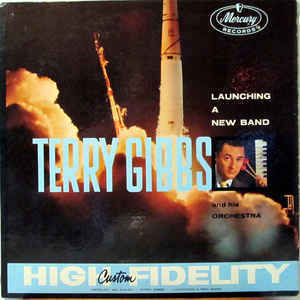
By early 1959, the big band bug had caught up with Gibbs again; he was ready to get back in the studio and record in front of a big swinging band. Still recording for EmArcy, now Mercury Records, Gibbs contacted A&R man Bob Shad and floated the idea for his next recording: Launching a New Band, Terry Gibbs and His Orchestra. Gibbs’s idea was for the album to be a tribute to six of the most iconic bandleaders of the big band era: Duke Ellington, Count Basie, Benny Goodman, Artie Shaw, Lionel Hampton, and Tommy Dorsey. Shad was on board with the idea and Gibbs hired six of the premier arrangers for the project, each to arrange two tunes by one of the bands. Al Cohn got Hampton (“Cotton Tail,” “Midnight Sun”). Bob Brookmeyer got Goodman (“Let’s Dance,” “Don’t Be That Way”), Manny Albam got Basie (“Moten Swing,” “Jumpin’ at The Woodside”), Marty Paich got Dorsey (“I’m Getting Sentimental Over You,” “Opus #1”), and Bill Holman got Shaw (“Stardust,” “Begin The Beguine”).
This band, unlike the New York band that was assembled strictly for the previous studio session, consisted not only of the best musicians on the coast but a group that had been playing together regularly with the local kicks bands of Med Flory and Bill Holman. Heading up the rhythm section for both bands was Mr. Swing himself, the great Mel “The Tailor” Lewis. Leading the brass sections were two of the best lead trumpet players in the business, Al Porcino and Ray Triscari. Rounding out the personnel were: Conte Candoli, Phil Gilbert, and Stu Williamson (trumpets), Bob Enevoldsen, Frank Rosolino, and Vern Friley (trombones), Joe Maini, Charlie Kennedy (altos), Bill Holman, Med Flory (tenors), Jack Schwartz (Baritone), Joe Mondragon and Max Bennett (bass), and Pete Jolly (piano). The album is a revelation for its superb adaptations of the big band chestnuts crafted by the six master arrangers, the swinging cohesion of the ensemble, top notch soloists, and the irrepressible artistry of Terry Gibbs.
As fate would have it, Gibbs’s initial reluctance to start his own big band was about to dissolve. A movie columnist named Eve Starr had been digging Terry’s playing in clubs around town and became a fan and subsequently a friend, occasionally writing him up in her column. Two of her friends owned a night club called the Seville in Hollywood that was not doing well and she suggested they try putting in some jazz and recommended Gibbs for the gig. To make a long story short, the original quintet Terry brought in eventually wound up being the 16-piece band he had just put together for the new Mercury date. Even with plugs from Steve Allen on his NBC Show and excited word of mouth among the musicians in town, expectations were low as to how many people the band would draw. Well, opening night, the place was packed with around 300 people, including many of Tinsel Town’s biggest stars as well as just about every musician in town. There was no turning back for Terry now, and the Terry Gibbs Dream Band was launched: he was now the leader of his own big band . . . and what a band.
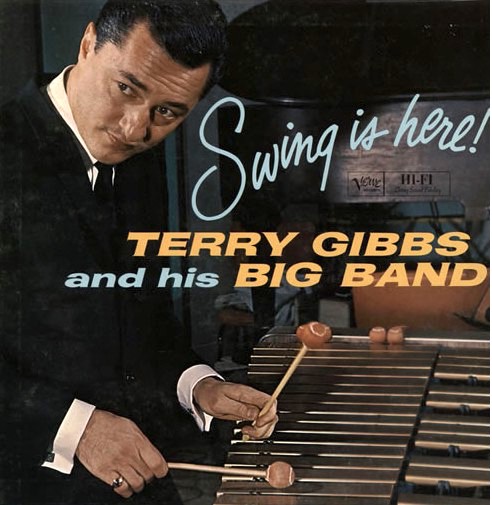
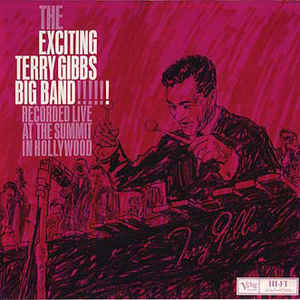
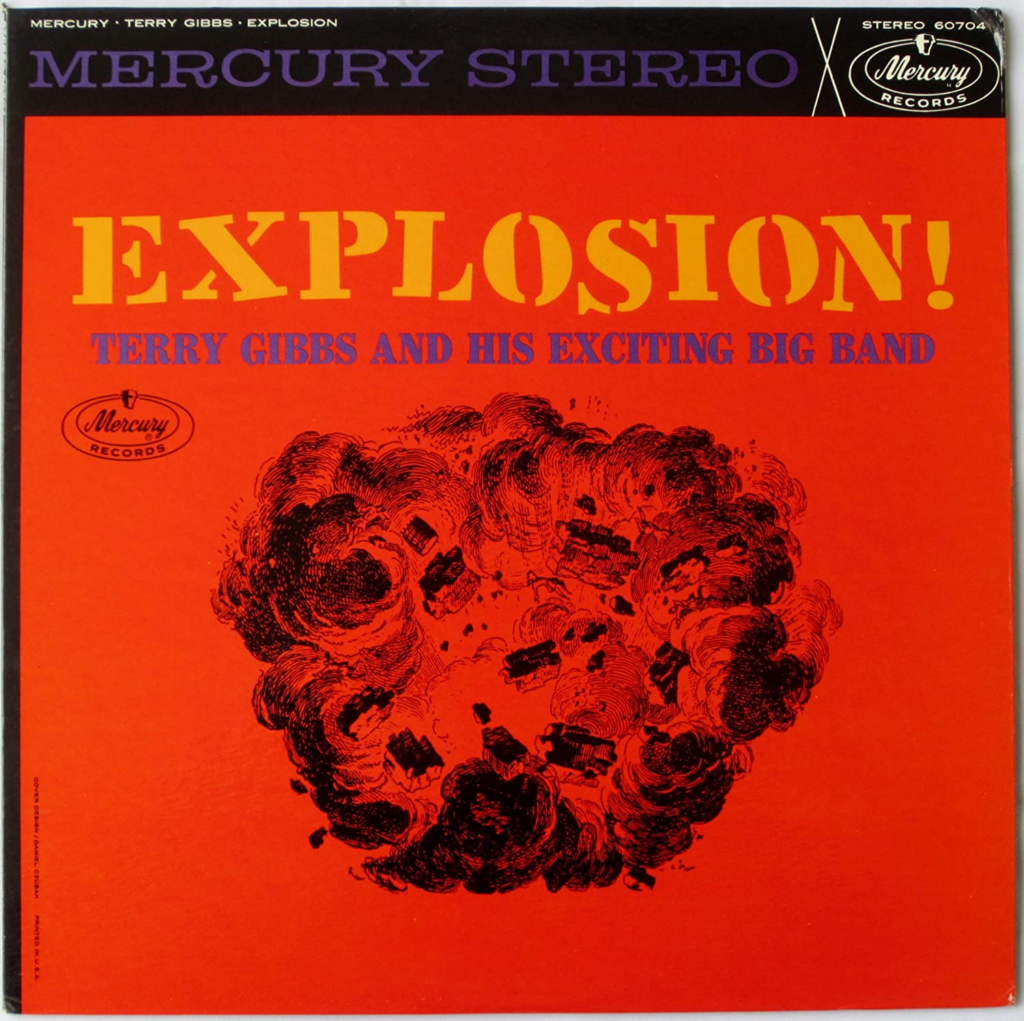
Between 1960 and 1962, the band would record an album a year for the Verve label, starting with a studio date in 1960 entitled Swing Is Here, followed by two live dates, 1961’s The Exciting Terry Gibbs Big Band and 1962’s Explosion: Terry Gibbs and His Exciting Big Band. The band’s personnel remained pretty stable throughout its run, with Porcino and Triscari leading the trumpet section and the ensemble powered by one of the greatest big band drummers of any era, Mel Lewis. The band continued to inspire arrangers and Gibbs’s book began to fill up with charts by Bill Holman, Shorty Rogers, Med Flory, Marty Paich, Al Cohn, and Manny Albam. All in all, Terry Gibbs had solidified his place in the pantheon of Big Band swing as the leader of one of the greatest bands of all time, The Terry Gibbs Dream Band. Both the live albums Exciting and Explosion were re-issued on CD by Gibbs on the Fantasy label, along with four additional CD’s of more unissued live recordings by the band: don’t wait any longer, go get them.
Even though, for me, when I think of Terry Gibbs, it is the Dream Band I most associate him with, make no mistake, throughout out his illustrious eight-decade-long career, Gibbs has recorded over 100 albums under his own name and performed with just about every major jazz artist of our time. As I said at the outset, pick up any Terry Gibbs album and you will be treated to the very best in jazz.
On a personal note, I have for many years now been frustrated and dismayed by the National Endowment for the Arts’ inexplicable failure to name Terry Gibbs as an NEA Jazz Master. Since the creation of this honor, I can think of no other jazz musician more deserving of the award, and it is a travesty in my opinion that he has not yet received it. Terry Gibbs was born on October 13, 1924 and, though he shows no signs of slowing, the NEA should move while we still have this inimitable musician in our midst: we’d like to celebrate his award with him . . . in person!
So, my friends, pick up one or more of the albums by Master Terry Gibbs I have hipped you to here as they are all essential jazz listening. Keep Swinging!
1) Nutty Notes
2) Terry Gibbs Quartet with Terry Pollard
3) Buddy Rich Big Band with Terry Gibbs, 1948
4) Terry Gibbs with Benny Goodman
5) The Steve Allen Show Interview with Terry Gibbs
6) Steve Allen and Terry Gibbs, Vibes Duet 1997
7) Terry Gibbs with Regis Philbin
8) Let’s Dance
9) Stardust
10) Nose Cone
11) Billie’s Bounce
https://www.youtube.com/watch?v=C9BMCAl-Tc0
12) The Fuzz
13) Sweet Georgia Brown
14) Begin the Beguine
15) Opus #1
2 Comments
Rod Baum
i couldn’t have said it better. As a matter of fact, I couldn’t have said it at all. What a loving and beautiful treatise about Terry Gibbs. While he was often self-deprrcating and believe it or not, shy! He carried the torch as long or as loudly as anyone for swinging big bands. Thanks, Dean…you “done good”
Dean Pratt
Thanks Rod, I had a great editor! I’m just astounded at the lack of recognition by the NEA. As a jazz musician and big band leader, I have always marveled at what Terry Gibbs has done. Of course we big band freaks have listened to the Dream Band more than much of his small group sides but they are all very good. His creativity is sometimes gets lost at those 100 mile a hour tempos but his ballad playing is as good as it gets. Anyway, I got to listen again to many of them for the piece which is hard to do sometimes when you have 13 thousand to pick from. Keep swinging!